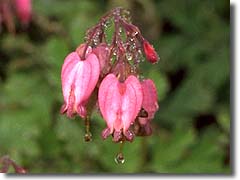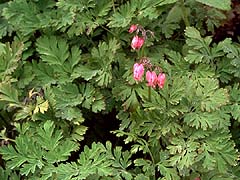
This family now includes the Fumariaceae (Fumewort Family), which have some minor differences from the poppies: True poppies have 4 or 6 petals that are all alike, while fumeworts have 2 petals that are different from the other 2. Both usually have 2 sepals. Stamens range from several to many (howzat for exact?) - the pistil, often divided into 2 or more segments, ripens as a unit and produces many seeds.
Our two native species on Montara Mountain include the unique Dicentra formosa - Bleeding Heart, and the well known California State Flower Eschscholzia californica - California Poppy.

